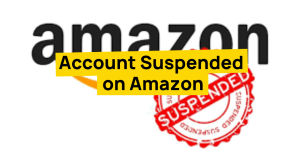The year 2020 was a turning point for Amazon sellers. The COVID-19 pandemic disrupted supply chains and increased competition.
Amazon introduced major policy changes that forced sellers to rethink their strategies. Many had to adapt by using new tools and external traffic sources to maintain sales.
Looking back at how sellers tackled these challenges can be eye-opening. Since Amazon is always changing its rules and fulfillment processes, understanding past strategies can provide valuable insights.
In this article, we’ll explore key Amazon policy changes and the best tools on Amazon from 2020. By learning from the past, sellers can refine their approach and stay competitive in 2025.
Best Tools on Amazon in 2020
With how unpredictable Amazon became in 2020, many sellers had to rethink their approach. To stay competitive, they relied on various tools and strategies to manage inventory, drive traffic, and analyze data.
1. Yasiv Spider Web
Yasiv was a visual tool that helped sellers find related products on Amazon. It allowed them to identify cross-sell opportunities, but it stopped working after 2020.
2. Pinterest Ads
Sellers used Pinterest Ads to drive external traffic to their Amazon listings. This platform was valuable because it had high-intent shoppers and lower ad costs compared to traditional PPC.
3. Amazon Attribution
Amazon Attribution provided sellers with data on how external traffic sources impacted sales. It helped them optimize marketing efforts by tracking conversions from platforms like Google and Facebook.
4. MCF Tracking Automation
Multi-Channel Fulfillment (MCF) Tracking Automation allowed sellers to automate fulfillment across multiple sales channels. This streamlined operations and reduced manual order processing.
Amazon Policy Changes in 2020
Amazon introduced several policy changes in 2020 that significantly impacted sellers. These changes affected reviews, fees, and fulfillment costs, forcing sellers to adjust their strategies.
1. Product Reviews
Amazon made it harder for sellers to get organic reviews by tightening restrictions on review generation. Many sellers turned to Amazon Vine and external marketing strategies to build credibility.
2. FBA Removal Order Fees
Amazon changed its removal order fees, making it cost the same to dispose of inventory or have it returned. This forced sellers to rethink inventory management to avoid unnecessary costs.
3. MCF Fee Cost Reduced
Amazon lowered Multi-Channel Fulfillment fees, making it more affordable for sellers to fulfill orders outside of Amazon. This encouraged sellers to expand their business beyond Amazon while still using FBA.
Why 2020 Amazon Insights Still Matter in 2025
The best tools on Amazon from 2020 still provide valuable lessons for sellers today. Some, like Amazon Attribution and Pinterest Ads, are still useful, while others, like Yasiv Spider Web, are no longer available.
Exploring new tools is key to keeping up with Amazon’s evolving landscape. Sellers who adapt and replace outdated tools with better alternatives can maintain a competitive edge.
The Amazon policy changes in 2020 forced sellers to adjust their strategies quickly. This skill remains essential in 2025, as Amazon continues to update its rules and fees.
By studying past trends, sellers can anticipate future shifts and make proactive decisions. Knowing how to pivot and stay flexible is the key to long-term success on Amazon.
Learning from the Past to Succeed in the Future
Understanding past Amazon policy changes and the best tools on Amazon can help sellers make smarter decisions. By studying how sellers adapted in 2020, you can develop strategies to stay competitive and navigate future marketplace shifts.
Are you struggling with new Amazon policy changes and tools? Let our Amazon agency help you—contact us today!





